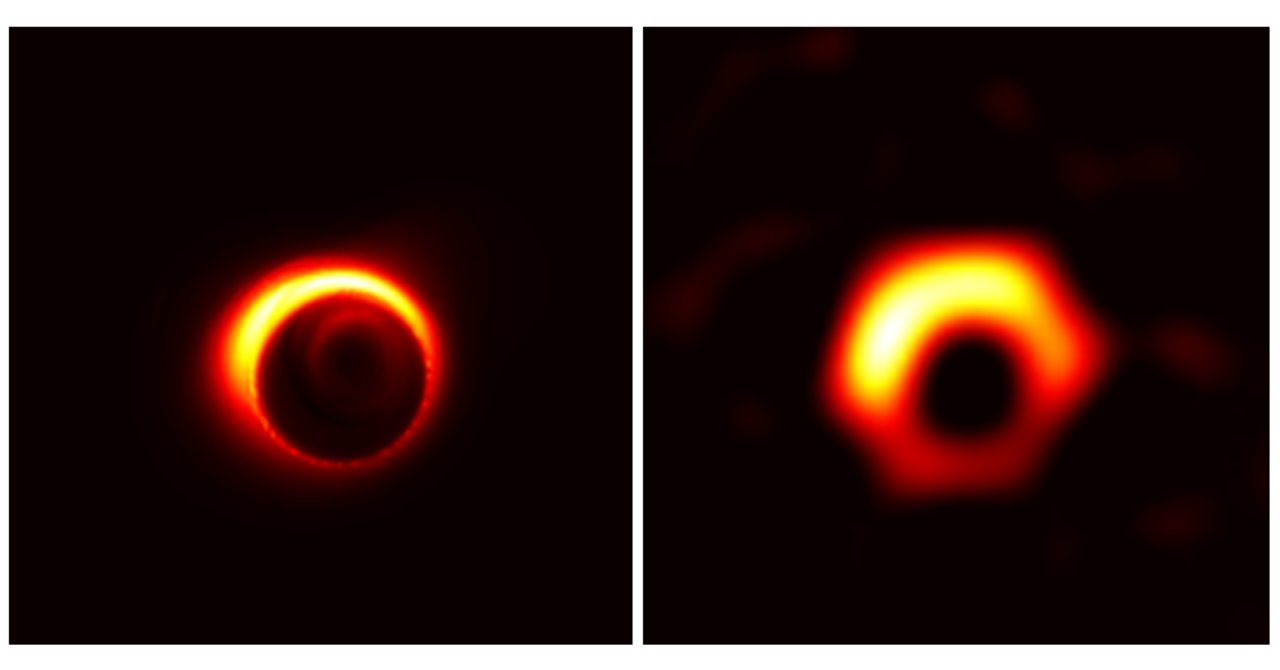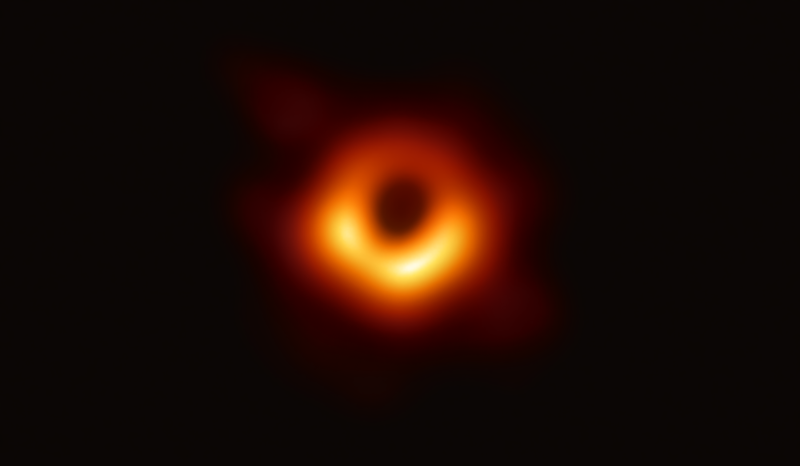Printable Version of Topic
Click here to view this topic in its original format
Unmanned Spaceflight.com _ Telescopic Observations _ Event Horizon Telescope
Posted by: alan Apr 5 2019, 06:22 PM
On April 10th 2019, the Event Horizon Telescope (EHT) Collaboration will present its first results in six simultaneous press conferences around the world, and many satellite events organized by its stakeholder and affiliated institutions. Press conferences will be held simultaneously in Brussels (in English), Santiago (in Spanish), Shanghai (in Mandarin), Tokyo (in Japanese), Taipei (in Mandarin), and Washington D.C. (in English), starting at 13:00 Universal Time.
https://eventhorizontelescope.org/blog/media-advisory-first-results-event-horizon-telescope-be-presented-april-10th
Posted by: dtolman Apr 5 2019, 07:59 PM
Just to be clear as to expected results - this is a large (Earth sized!) radio interferometery array, so what we'll get is a false color image visualizing the data. There is a simulated image in https://www.eso.org/public/usa/outreach/first-picture-of-a-black-hole/blog/ from a few years ago, if we want to compare expectations to (next weeks) reality:
Posted by: fredk Apr 5 2019, 08:36 PM
Just to be absolutely clear, since the caption for that image doesn't say: the left image looks like the original full-resolution model, and the right image seems to be the simulated recovered image. At least the right image looks comparable to other simulations I've seen. So expect something like the right image, if everything works as well as hoped.
Posted by: dtolman Apr 10 2019, 01:20 PM
The image has been released!
Its remarkably like the artists rendering, especially if you flip it upside down.
EDIT:
Paper has been released https://iopscience.iop.org/journal/2041-8205/page/Focus_on_EHT.
It has more data than the simple press release - such as multiple images taken over the course of a week by the EHT. To my eye it seems that the bright feature may be slowly rotating counter-clockwise - hopefully new observation campaigns unveil the dynamics of the black hole!
Posted by: ngunn Apr 11 2019, 11:19 AM
I wanted to understand at a basic level what we are seeing here, especially the difference between the event horizon itself and the black hole shadow. I found this article useful, especially the abstract and some of the diagrams:
https://arxiv.org/pdf/1804.08030.pdf
Posted by: dtolman Apr 11 2019, 06:23 PM
This video has a nice explanation (and some great visualizations of how light is trapped, creating the shadow) - at about the level of a Scientific American article - if you want something between a physics paper and a tabloid ![]()
https://www.youtube.com/watch?v=zUyH3XhpLTo
Posted by: ngunn Apr 11 2019, 06:52 PM
That's exactly where I float so the video is perfect for me.
Posted by: fredk Oct 11 2019, 08:39 PM
I asked a member of the EHT team about this yesterday and he pointed out that, although the resolution is of course quite low, the S/N of these images is actually quite high. So the changes seen over the observation period might be real changes in the source. It sounds like they are working on addressing the question of whether the observed changes are consistent with model predictions of the dynamics.
One of the better fairly-basic-level descriptions of what we're seeing in the case of M87* is https://profmattstrassler.com/2019/06/14/a-ring-of-controversy-around-a-black-hole-photo/ The gist is that we are seeing some combination of a "photon ring" and a nearly-face-on acretion disc (the inclination is estimated at less than 20 degrees or so). How much of each is strongly model-dependent, so we can't say yet that this image shows the photon ring. (The team have definitely taken this effect into account.)
Posted by: scalbers Oct 16 2019, 06:49 PM
One thing I'm unclear on is how much different the image would look if the view was more edgewise. This would of course have to take into account the light rays being bent by gravity.
Posted by: fredk Oct 16 2019, 07:51 PM
You could see both sides of the part of the acretion disk behind the black hole if you're viewing nearly edge-on, due to the bending of the rays around the hole. See the "Why the Gargantua Black Hole from Interstellar is Completely Different" section of the page I linked to above.
Powered by Invision Power Board (http://www.invisionboard.com)
© Invision Power Services (http://www.invisionpower.com)
